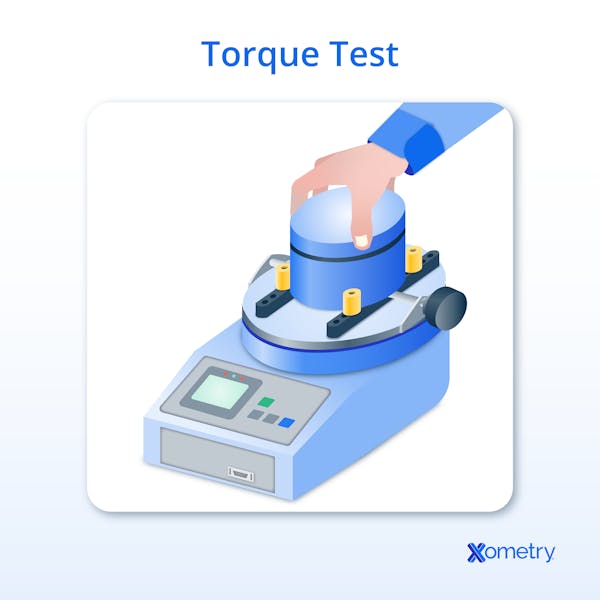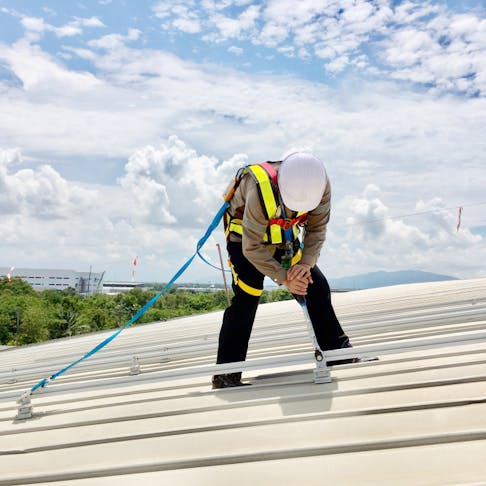A torque test is used to identify the reaction of an object under turning and twisting conditions. Torque testing is usually applied in industries like manufacturing, aerospace, pharmaceutical, automotive, etc. A torque tester (also called a torque analyzer) is one of the core tools for conducting torque tests.
The right torque rating ensures safety and efficiency. Before conducting a torque test, choosing the right tool and understanding the type of torque test to conduct are essential.
This article will examine a torque test and outline its importance, the tools needed, and the common applications.
What Is a Torque Test?
A torque test is a measure of an object’s reaction to applied rotational force. Torque tests come in different forms, some mild and some excessive. These include: static, dynamic, destructive, and non-destructive torque testing.

Why Is Torque Testing Important?
Torque testing is important to manufacturing procedures because it evaluates the safety and efficiency of certain parts. Take the bottling industry, for example; bottle caps are torque-tested to ensure enough pressure is added to the cap to seal the container and prevent kids from opening it easily, but not so much that it damages the bottle itself. This applies to glass and polyethylene terephthalate (PET) bottles.
Similarly, torque tests help manufacturers anticipate user experience. Using the bottle example, torque testing can help determine if caps should be tighter or looser. They may be difficult to open if excessively tight, stressing the consumer or making the product unusable. The bottle may lose pressure or even allow bacterial infiltration if it is too loose.
Moreover, the torque test process helps manufacturers define parameters, adhere to quality control requirements, and measure stiffness and torsional strength. Furthermore, it is a good gauge of performance and design-parameter accuracy.
How Is the Torque Test Conducted?
A torque test consists of three steps as discussed below:
- Movement Test: The movement check, also referred to as the first movement torque test, is done by using a torque measuring tool to test a tightened threaded fastener (nut, bolt, or screw). Mark the tightened fastener and turn the torque testing tool clockwise to start a movement check. Do this until the fastener begins to tighten further. Record the torque necessary to initiate that rotation (also called residual torque). This test is conducted to confirm that a product complies with its design and manufacturing requirements.
- Loosening Test: The loosening check, also called the breakaway test, is the opposite of the movement check. For the loosening check, the torque testing tool is applied and turned counterclockwise until the fastener loosens. Take a torque reading when the bolt or screw “breaks” and begins to move. That breaking torque (also known as “breakaway torque”) is also the maximum torque the joint will likely experience in the counterclockwise direction. This test helps to ensure accuracy and precision. It also prevents failures.
- Marking Torque Test (Visual Inspection Method): After tightening a fastener to the specified torque, a visual reference mark is applied across the fastener head (or nut) and the mating surface. This mark is used to detect any post-assembly rotation. If, during inspection, the marks no longer align, it indicates that the fastener has rotated, potentially due to loosening, thermal expansion, or vibration.
This test does not measure the actual torque applied or confirm preload. It is simply a visual indicator tool for monitoring fastener movement after installation.
What Tools Are Used in Torque Testing?
There are several torque testing tools. These include:
- Torque tester
- Adapter and fitting
- Torque sensor
- Calibration equipment
- Test stand
- Dial torque wrench
- Load cell
- Torque screwdriver
- Torque multiplier
- Torque meter
What Do the Torque Test Results Mean?
A torque test result helps verify whether the applied torque is appropriate for a given fastener, ensuring the correct preload is achieved without exceeding material limits. It also confirms if the joint meets the application’s mechanical and safety requirements.
For example, when tightening a ¾” galvanized, wax-lubricated structural bolt, torque values can vary significantly depending on the bolt grade, lubrication, thread condition, and washer configuration. Standards like ASTM A325 define bolt performance, but they do not prescribe specific torque values. Instead, torque must be calculated based on the required clamp force (preload) using:
T = K × D × F
Where:
T = torque (in-lbs or N·m)
K = nut factor (depends heavily on lubrication)
D = nominal bolt diameter
F = preload (force in lbs or N)
For structural bolts under ASTM A325, preload is typically around 70% of proof load, and torque is calculated accordingly. A common torque range for a ¾" A325 bolt might be 240–260 ft-lbs with lubrication, but again, that depends on real-world variables.
If tension values are being directly measured (e.g., using ultrasonic elongation or load cells), ensure the applied tension matches the target preload without exceeding yield strength. Exceeding maximum tensile capacity can cause thread stripping, bolt necking, or joint failure.
Is Young's Modulus Used To Determine How Much Torque Is Needed?
Not directly. Young’s modulus, or the modulus of elasticity, measures a material’s capacity to withstand compression or tension. It shows how materials can deform but resume their initial shape after exposure to tension.
However, torque is more directly related to shear modulus and thread geometry in fasteners. Young’s modulus may be a factor in joint stiffness calculations, but it’s not typically used to determine torque. To learn more, check out our guide on How To Calculate Young’s Modulus.
What Are the Common Applications of Torque Testing?
Common applications of torque testing are:
- Mechanical lugs
- Breakers
- Dental implants
- Fasteners
- Bottle caps
- Key ignition
- MSB Bussing
- Dashboard knob
What Do You Need To Know About Torque Specifications and Standards?
Industry-governing bodies set standards for torque testing to ensure safety and efficiency. Relevant regulatory bodies include: the FDA (Food and Drug Administration), ISO (International Organization for Standardization), SAE (Society of Automotive Engineers), AIA (Aerospace Industries Association), ASME (American Society of Mechanical Engineers), and ASTM (American Society for Testing and Materials).
Here are some important points to know about torque specifications and standards:
- ISO 16047 specifies test methods for torque/clamp force characteristics of threaded fasteners, including testing procedures for determining friction coefficients and tension resulting from applied torque.
- ASTM F606/F606M provides testing procedures for mechanical properties of externally and internally threaded fasteners, including torque/tension tests, axial tension, wedge tensile, and hardness.
- ASTM A325 specifies strength requirements for structural bolts, including minimum preload, but does not provide prescribed torque values. Torque must be calculated based on joint variables.
- ASTM D3198 is for testing child-resistant closures (measures opening and closing torque under controlled conditions).
- ISO 13302 covers methods for measuring torque characteristics of non-metallic closures on rigid containers.
How To Address Common Issues in Torque Testing
There are several ways to address torque-testing problems:
- Torque Tool Maintenance: Torque testers or other equipment must be properly used, checked, stored, and cleaned. They must also be connected to safe and reliable power sources, following the manufacturer's instructions. Faulty or worn parts should be repaired or replaced.
- Performance Tracking: The tools’ maintenance logs, calibration, and torque test results must be monitored and recorded regularly.
- Training: Personnel who perform the torque testing should be trained to use the tools properly and interpret their test results.
What Are the Latest Trends and Developments in Torque-Testing Technology?
Advancements in torque testing technology largely center around sensors. They’ve trended toward miniaturization, wireless, and non-contact measurement technologies where applicable. In addition, torque sensors are now a part of smart manufacturing.
Car manufacturers have also driven torque-measuring trends toward Industry 4.0 quality control standards. They monitor and analyze real-time data and integrate torque measurements into smart manufacturing processes.
Electric vehicle manufacturers heavily use torque tests. The components must deliver torque to the wheels without using excessive energy. Torque transducers are positioned in the electric motor and transmission to monitor performance. The transducers generate real-time data, improving the vehicle’s performance and boosting efficiency.
What Are Best Practices When Ensuring Accuracy in Torque Testing?
The best steps to ensure accuracy in torque testing are:
- Use dedicated torque testing equipment, such as calibrated torque transducers, analyzers, or rotary torque sensors appropriate for the application (static or dynamic testing).
- Calibrate all test equipment regularly according to manufacturer-recommended intervals to maintain traceability and accuracy.
- Control environmental conditions like temperature and humidity, as these can affect material properties and measurement accuracy during testing.
- Use consistent fastener lubrication and surface finish, since friction directly affects torque-tension results and is critical for reproducibility.
- Record axial tension data alongside torque when possible, using a load cell or bolt elongation method to verify torque-to-tension correlation.
- Follow the relevant testing standards to ensure methodology and reporting are valid and repeatable.
- Account for tool compliance and backlash in the test setup, particularly in dynamic torque testing or high-speed applications
What Is the Role of Torque Testing in Quality Control?
Torque testing plays a significant role in quality control by ensuring products or devices meet torque requirements provided by regulatory bodies. Compliance makes them less prone to breakage, wastage, or accidents.
How Do Different Torque Types Compare?
There are three types of torque tests: static, dynamic, and non-destructive torque tests. Their differences are discussed below:
- Static Torque Test: The static test is conducted on stationary objects or parts. It is used to confirm a part’s ability to perform under load. It is also used to check product design health.
- Dynamic Torque Test: The dynamic test is conducted by connecting a torque sensor to a rotating part. The test determines the part’s durability, efficiency, and performance.
- Non-destructive Torque Test: The non-destructive torque test applies to assembled or whole items without uncoupling their connected parts. This test is done in two ways: magnetic particle and ultrasonic torque testing.
The magnetic particle torque testing method detects changes in a surface in response to torque by measuring alterations in magnetic fields. The ultrasonic torque test measures applied torques with ultrasonic waves.
How Is the IZOD Test Relevant to the Torque Test?
The IZOD impact test is relevant to torque testing because it can further determine a material’s resistance to breakage and help engineers ascertain its response to impact loading. However, IZOD is not typically directly used with torque testing; it is a complementary test.
Does Torque Test Require Certification and Compliance?
Yes, torque tests require certifications and compliance with regulatory standards. People who have undergone training and demonstrated adequate knowledge of torque tests can be certified as torque-testing professionals.
Does the Material Type Matter When It Comes to Torque Testing?
Yes, material properties such as hardness, elasticity, and surface friction significantly affect torque measurements. The industry or department conducting the torque test will determine the type of material to use.
One common target is aluminum alloys. Other regularly tested materials are ceramics, copper, steel, thermoplastic polymers, etc.
What Is the Difference Between Torque Testing and Force Testing?
Torque testing indicates how objects react to different twisting or turning loads. On the other hand, force testing determines a material’s reaction to compression or tension at the point of failure. Both tests apply force to materials until they break.
Summary
This article presented torque tests, explained them, and discussed how they are conducted. To learn more about torque tests, contact a Xometry representative.
Xometry provides a wide range of manufacturing capabilities and other value-added services for all of your prototyping and production needs. Visit our website to learn more or to request a free, no-obligation quote.
Disclaimer
The content appearing on this webpage is for informational purposes only. Xometry makes no representation or warranty of any kind, be it expressed or implied, as to the accuracy, completeness, or validity of the information. Any performance parameters, geometric tolerances, specific design features, quality and types of materials, or processes should not be inferred to represent what will be delivered by third-party suppliers or manufacturers through Xometry’s network. Buyers seeking quotes for parts are responsible for defining the specific requirements for those parts. Please refer to our terms and conditions for more information.


